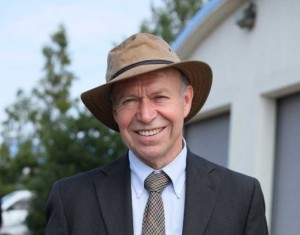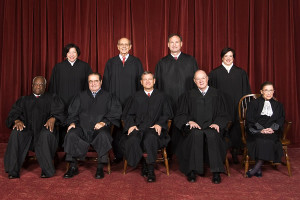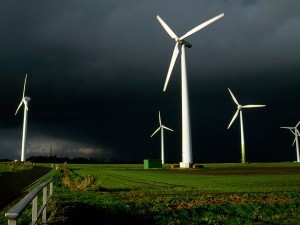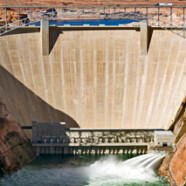Suicide Bombing the Economy: A Manifesto
Rise up you Conquistadors of the Useless and drop a bomb on the growth economy. A climate change suicide bomb is self-abnegation that strikes at the heart of capitalism: it’s an intentional subtraction from one’s own place in the capitalist economy. It’s a downshift: a shift from full-time to half-time employment, or half-time to quarter-time, taking away from the life-sucking economy, creating lives set free. Bomb the Useful: the consumer lifestyles which are destroying the planet. Praise the Useless: raising children, reading poetry, running trails, climbing mountains, playing music, making peace. Fight climate change, reject denialists, including those too-clever environmentalists who trick us with mantras of green consumerism and renewables. A Prius in every driveway will not save us. A climate change suicide bomb adds life to a weary system. The American work ethic must go. It is part of the ideological scaffolding that supports the growth economy. We must learn to work less and play more. Let’s undo the economy that is undoing us. Our obsession with the Gross Domestic Product is causing drought, floods, starvation, and the Holocene extinction. Rise up you Conquistadors of the Useless. Don’t let them take your one, wild, precious life and planet. Let’s ratchet down the global economy one bomber at a time. — Nikolai Lash Read MoreStanding in Climate Change Litigation: Local Is Global, Global Is Local
Standing in Climate Change Litigation:
Local Is Global, Global Is Local[1]
By Nikolai Lash
I. Introduction
Climate change is perhaps the world’s most fundamental and pressing problem. James Hansen, the well-known climate scientist, said in 2007: “Human-made greenhouse gases are near a level such that important climate changes may proceed mostly under the climate system’s own momentum . . . [I]f we go over the edge, it will be a transition to ‘a different planet,’ an environment far outside the range that has been experienced by humanity. There will be no return within the lifetime of any generation that can be imagined, and the trip will exterminate a large fraction of species on the planet.”[2] By many accounts, time is running short for addressing climate change. The number of options available for mitigation will dwindle if we fail to act.
James Hansen
Litigation is an obvious, but tortuous, path. It is an understatement to say that climate change plaintiffs have had a difficult time getting standing in recent litigation. This article analyzes the current standing roadblock by examining two cases—the seminal Massachusetts v. EPA (Massachusetts),[3] where standing was granted, and Washington Environmental Council v. Bellon (WEC), where standing was denied.[4]
I conclude with two specific recommendations for plaintiffs regarding standing. One recommendation is that plaintiffs submit declarations that better address the unusual causation issues found in climate change cases. The second recommendation concerns the issue of redressability, wherein I conclude that standing is likely to be successful only in cases where targeted emissions contribute significantly to the global accumulation of greenhouse gases (GHGs). These ideas emerge from a single statement in the WEC opinion: “[A]ttempting to establish a causal nexus in this case may be a particularly challenging task . . . because there is a natural disjunction between Plaintiffs’ localized injuries and the greenhouse effect.”[5] The problem is the uncertain nature of the connection between the local and the global.
II. Historical Standing Requirements[6]
“Article III of the Constitution limits the ‘judicial power’ of the United States to the resolution of ‘cases’ and ‘controversies.”[7] In order to establish the existence of a case or controversy, a party must meet certain constitutional requirements, including “the requirement that … it has standing to bring the action.”[8] In 1992, a Supreme Court decision, Lujan v. Defenders of Wildlife, set the foundation for constitutional standing, a three-part test requiring: (1) a showing that the plaintiff has “suffered an ‘injury in fact,’” which is (a) “concrete and particularized” and (b) “actual or imminent,” not “conjectural” or “hypothetical”; (2) that “there must be a causal connection between the injury and the conduct complained of—the injury has to be ‘fairly trace[able] to the challenged action of the defendant, and not . . . th[e] result [of] the independent action of some third party not before the court’”; and (3) “it must be ‘likely,’ as opposed to merely ‘speculative,’ that the injury will be ‘redressed by a favorable decision.’”[9]
III. Massachusetts v. EPA
Massachusetts was the high point in climate change standing. In that case, the state was held to have standing to challenge the Environmental Protection Agency’s (EPA) failure to regulate greenhouse gas emissions from motor vehicles under the Clean Air Act (CAA). Justice John Paul Stevens ruled on behalf of a 5-4 majority of the Court that the state plaintiff[10] in the case satisfied all three elements of the Article III standing test.
Supreme Court
Regarding causation, the second element of the Lujan test, EPA did not dispute the existence of a causal connection between greenhouse gas emissions and global warming, but instead argued that its decision not to regulate greenhouse gas emissions “contributes so insignificantly to petitioners’ injuries that the Agency cannot be haled into federal court to answer for them.”[11] The Court responded that even small steps—“incremental steps”—of improvement are legally justifiable.”[12]
Regarding redressability, the third element of the standing test, the Court found that regulating motor-vehicle emissions would have an appreciable impact on global warming.[13] The Court noted that the U.S. transportation sector emitted 1.7 billion metric tons of carbon dioxide into the atmosphere in 1999, accounting for more than 6 percent of worldwide carbon dioxide emissions. “Judged by any standard, U.S. motor-vehicle emissions make a meaningful contribution to greenhouse gas concentrations,”[14] opined the Court, and thus satisfied the redressability element.
Notwithstanding Massachusetts, the clear trend in recent climate change litigation has been to deny standing, typically based on causation and redressability inadequacies. Washington Environmental Council v. Bellon is representative of these recent cases.[15]
IV. Washington Environmental Council v. Bellon
In WEC, two environmental organizations, Washington Environmental Council and the Sierra Club, brought a CAA citizens suit seeking to force three Washington state agencies[16] to regulate GHG emissions from oil refineries. In 2008, GHG emissions from state oil refineries made up 5.9% of the total greenhouse gas emissions in Washington.[17] Their claim was that defendants had a duty to establish emissions limits, called “reasonably available control technology” (RACT), for greenhouse gases and apply those limits to the state’s five oil refineries.[18]
Washington state oil refinery
The U.S. District Court for the Western District of Washington sided with the plaintiffs and ordered the agencies to finish the RACT process for the refineries by May 2014. Intervening on behalf of the agencies was Western States Petroleum Association (WSPA),[19] who brought the appeal to the Ninth Circuit, arguing that the case should have been dismissed for lack of standing. The appellate court agreed with WSPA and vacated the lower court’s ruling.
Attempting to establish standing, the environmental groups declared that members suffered various injuries from climate change caused by increases in GHGs, including reduced ability to enjoy skiing and snowshoeing and economic losses from affected ranching interests and property damage.[20] The Ninth Circuit found the first element of the standing test—injury—to be satisfied, but not the causation element. The court found the connection between emissions at defendants’ oil refineries and plaintiffs’ injuries to be too attenuated to meet the causality requirement for Article III standing.[21] For example, one of the members asserted that “[t]he failure of the clean air agencies to require [RACT] that can result in reductions to greenhouse gas emissions at the oil refineries has harmed me, and other WEC members, by failing to reduce and control air pollutant emissions that cause or contribute to climate change and its negative impacts on my property, my health, and my way of life.”[22] Another declared that “the failure of the Agencies to take the actions described . . . will result in additional greenhouse gas emissions in Washington State that will exacerbate changes to the regional and global climates.”[23] The court found these declarations to be “only vague, conclusory statements,”[24] which lacked a solid evidentiary basis.
Regarding redressability, the WEC court noted that the record contained no evidence that RACT standards would curb a significant amount of GHG emissions. The court compared the WEC situation with the one in Massachusetts where the emissions from the motor-vehicle sector accounted for 6 percent of worldwide carbon dioxide emissions. In Washington, the GHG emissions from all five oil refineries added up to less than 6 percent of statewide emissions. As the WEC court said, “While this may be a significant portion of state emissions, Plaintiffs do not provide any evidence that places this statistic in national or global perspective to assess whether the refineries’ emissions are a ‘meaningful contribution’ to global GHG levels.”[25] The term, meaningful contribution, comes from the Massachusetts opinion where the Supreme Court found that “motor-vehicle emissions make a meaningful contribution to greenhouse gas concentrations.”[26] Because the global warming effect of the emissions from the oil refineries was “scientifically indiscernible,”[27] the redressability element was not satisfied in WEC.
Thus, the problem for the plaintiffs was twofold: first, none of the plaintiffs’ declarations adequately connected the dots between emissions and effects. This left the causation element inadequately addressed. Second, because of the relative insignificance of the size of the oil refineries’ emissions, the remedy plaintiffs were seeking was incapable of fixing the problem, leaving the redressability requirement unmet. Both of these problems stem from the local-global dynamic, which is peculiar to climate change cases. Emissions anywhere contribute to a global increase of greenhouse gases, affecting the planet in a myriad of ways, but manifesting in particular locations with great unpredictability.[28]
V. The Local-Global Issue: Two Lessons
As climate change worsens and a growing number of individuals and states suffer harm, more plaintiffs will be seeking relief within the judicial system. The Massachusetts and WEC decisions contain important insights helpful in determining how to manage the difficult causation and redressability elements of the standing test.
One lesson learned from analyzing Massachusetts and WEC is that something more is needed than a general allegation that a particular GHG emitter is affecting a specific locality. To satisfy the causation element of the standing test, plaintiff declarations must describe with particularity the causation pathway between the source of the emissions and the climate change effects at a particular locality. Plaintiffs must show scientific support for their specific allegations.
In WEC, it was not enough for plaintiffs to amass numerous declarations of harms to be suffered so long as the declarations contained only unsubstantiated, conclusory statements. On the other hand, in Massachusetts, plaintiffs were careful to provide written testimony that GHG emissions from automobiles would have a direct effect on the state’s coastline. Experts hired by plaintiffs provided scientific evidence showing that the anticipated increase in unregulated emissions would lead to higher ocean levels, inundating state property with water and causing more frequent and higher intensity storms, damaging important resources as a result. According to petitioners’ declarations, “global sea levels rose somewhere between 10 and 20 centimeters over the 20th century as a result of global warming. . . The severity of that injury will only increase over the course of the next century: If sea levels continue to rise as predicted, one Massachusetts official believes that a significant fraction of coastal property will be ‘either permanently lost through inundation or temporarily lost through periodic storm surge and flooding events.’”[29] The Supreme Court was convinced by the plaintiffs’ experts that not only would climate change worsen globally, but that Massachusetts would suffer specific harm as a result of EPA’s failure to act.
The second lesson learned from Massachusetts and WEC concerns the standing element of redressability. Without evidence that the targeted emitter can make a meaningful contribution to global warming, no remedy exists even potentially. In Massachusetts, the remedy sought by plaintiffs—regulations of motor-vehicle emissions—was shown to affect emissions that contributed 6 percent of worldwide GHG emissions. The Court found this contribution to be meaningful for the purposes of redressability. It is difficult to state where the demarcation for meaningful and unmeaningful contribution might lie, but it is clear from WEC that an emissions level of 5.9 percent of Washington state’s emissions is insufficient, at least for the Ninth Circuit appellate court. To meet the redressability element, courts expect to see evidence of an amount of GHG emissions that is measurable and appreciable at the global level. What that amount actually is will obviously vary from court to court, but will likely depend on the specificity and credibility of the evidence plaintiffs bring to demonstrate the connection between emissions and injury.
A Final Thought
Perhaps these standing difficulties are a sign that existing law is inadequate to address climate change. The very nature of climate change—a problem created by everyone, affecting everyone, and growing worse by continuing accumulations—is at odds with a legal system that has its origins in resolving disputes between two people. However that turns out, I think litigation will play an important, future role in climate change settings at least where procedural issues are at stake. When an agency shortchanges or disregards legally required procedures, as was done by EPA in Massachusetts, courts will likely remain an effective and appropriate venue for relief.
[1] The subtitle mirrors the Buddhist expression, “Emptiness is form, form is emptiness,” a line taken from the Heart Sutra, a Buddhist text which refers to the interdependence of all phenomena.
[2] James Hansen, “State of the Wild: Perspective of a Climatologist,” 10 April 2007, available online at: http://www.giss.nasa.gov/~jhansen/preprints/Wild.070410.pdf.
[3] Massachusetts v. EPA 549 U.S. 497 (2007).
[4] Washington Environmental Council v. Bellon, 732 F.3d 1131 (9th Circ. 2013).
[5] Id., at 1143.
[6] The United States has developed some of the most stringent standing requirements in the world. See, e.g., the United Kingdom, where the “sufficient interest” requirement has been interpreted liberally: “It would…be a grave lacuna in our system of public law if a pressure group…or even a single public spirited taxpayer, were prevented by outdated technical rules of locus standi from bringing the matter to the attention of the court to vindicate the rule of law and get the unlawful conduct stopped.” (Lord Diplock).
[7] Valley Forge Christian Coll. V. Ams. United for Separation of Church & State, Inc., 454 U.S. 464 (1982).
[8] Gettman v. DEA, 290 F.3d 430, 433 (D.C. Cir. 2002).
[9] Lujan v. Defenders of Wildlife, 504 U.S. 555, 560-61 (1992).
[10] Despite its assertion that states enjoy “special solicitude” in deciding standing questions, the Massachusetts decision did not provide clear reasons for distinguishing between the standing rights of states and private plaintiffs.
[11] Lujan, at 523.
[12] Id., at 524.
[13] Id., at 524-26.
[14] Id., at 525 (Emphasis added.)
[15] See, e.g., Native Village of Kivalina v. ExxonMobil 663 F.Supp.2d 863 (N.D.Cal. 2009); WildEarth Guardians v. Salazar and Antelope Coal, 880 F.Supp.2d 77 (D.D.C. 2012); Amigos Bravos v. BLM, 816 F.Supp.2d. 1118 (D.N.M. 2011); and Sierra Club v. U.S. Def. Energy Support Ct., Civil Action No. 01:11-cv-41 (2011).
[16] Washington State Department of Ecology, the Northwest Clean Air Agency, and the Puget Sound Clean Air Agency.
[17] WEC, at 1136.
[18] RACT standards were a part of Washington’s EPA-approved State Implementation Plan, required under the Clean Air Act.
[19] WSPA is an industry group of oil refineries that includes BP Cherry Point, ConocoPhillips, Shell Oil, Tesoro, and U.S. Oil.
[20] WEC, at 1140-41.
[21] Id., at 1141-44.
[22] Id., at 1142.
[23] Id.
[24] Id.
[25] Id., at 1145-46 (Emphasis added.)
[26] Massachusetts, at 525 (Emphasis added).
[27] WEC, at 1147.
[28] An obvious exception to the unpredictability of outcomes is oceanfront property, where forecasts can be made with near certainty that shorelines will be inundated.
[29] Massachusetts, at 522-23.
Giving Renewables a Boost: The beneFITs of Feed-in Tariffs
According to the International Energy Agency (IEA), investment in fossil fuel projects over the next quarter century is expected to outpace investment in renewable energy by a ratio of three to one. If we are to solve the most fundamental and pressing problem humanity faces—climate change—the IEA’s forecast will need to be proved wrong. This paper argues that feed-in tariffs (FITs) deserve serious consideration as perhaps the best of the renewable energy implementation tools, the mechanism cited as the primary reason for the success of the German renewable energy markets.
If implemented world-wide, FITs will lead to more than a 25-gigaton reduction in carbon, the amount of carbon needed to compose one climate mitigation wedge in the scheme developed by Robert Socolow and Stephen Pacala. Their idea is that an assemblage of 25-gigaton “stabilization wedges” can lead to the stabilization of carbon emissions in the next fifty years. Because FITs cause more renewable energy sources to come online and fossil-fuel plants to go offline, their implementation can lead to significant reductions in CO2 emissions. Successful implementation of FITs in the United States alone could create the required 25-gigaton reduction just by replacing coal-fired power plants with either wind or solar generation.
Section II of this paper describes feed-in tariffs, what they are and how they support renewable energy generation. Section III covers the details of what an effective FIT looks like. Section IV describes the benefits attending FITs in general. Germany’s remarkable success with FITs is described in Section V. Sections VI and VII cover the United States, and include an analysis of the particular constitutional challenges this country faces in implementing FITs.
I. What Are Feed-In Tariffs?
One of the best ways to support implementation of renewable energy is through feed-in tariffs. German Parliament member Hans-Josef Fell concluded, “[f]eed-in tariffs have proven to be the best support mechanism to rapidly increase the share of renewable energy production and use.”
FITs are somewhat like net metering where homeowners are compensated for energy they put back in the grid from their rooftop solar panels. With net metering, if solar panels are producing more energy than is being used, the meter will run backwards and a credit for the amount of energy being produced will be issued. With net metering the rate is the same as the rate paid for electricity, but with a feed-in tariff, the rate paid can be higher.
Whereas Renewable Portfolio Standards (RPSs) set goals for renewables, FITs provide a mechanism for more inclusion of renewables without necessarily facing upper limits as with RPSs.
FITs typically contain three key provisions:
1) guaranteed grid access,
2) long-term contracts, and
3) cost-based purchase prices.
The first provision, guaranteed access to the grid, is important for encouraging investment. “Purchase obligation is one of the most important ‘ingredients’ for all FITs as it assures investment security. It obliges the nearest grid operator to purchase and distribute all electricity that is produced by renewable energy sources, independent of power demand.” (D Jacobs, BK Sovacool, “Feed-In Tariffs and Other Support Mechanisms for Solar PV Promotion” (2012), at 94.) The second provision, long-term contracts, also helps ensure investor interest by guaranteeing fixed tariff payment over a period of many years.
The third provision, cost-based purchase prices, levels the playing field with existing production sources, ensuring renewables’ attractiveness to potential suppliers. FITs set fixed prices, the rate reflecting both the actual generation cost for each renewable energy technology plus a reasonable rate of return. Tariffs may differ by technology (e.g., wind or solar), location (e.g., rooftop or ground-mounted for solar PV projects), and size (e.g., residential or commercial scale). Costs of a FIT are passed on to consumers and reflect a public policy decision to increase the amount of renewable electricity used.
II. Getting FITs Right
The idea with FITs is to provide a balance between investment security for producers on the one hand and elimination of windfall profits on the other. One of the key questions concerns what to set the tariff price at. A tariff that is too low will not encourage investment in the targeted renewables while a tariff that is too high could lead to unreasonable costs for the consumer. In Europe, where FITs have been successfully employed for years, tariff levels have been set to allow for a rate of return between 5 and 10 percent on investment per year. The profitability of renewable energy generations needs to be as high or higher than for conventional electricity generations to provide an incentive to invest in cleaner forms of energy. FITs are generally financed via a small charge on the electricity price for consumers so that additional costs are distributed among all ratepayers.
FIT legislation can be set up with targets for renewable energies. “[T]argets are important in signaling long-term political commitment to investors. They indicate that support mechanisms will remain in place for a certain period of time and they will increase the likelihood of tariffs being sufficiently high.” (Miguel Mendonca, David Jacobs, and Benjamin Sovacool, “Powering the Green Economy: The Feed-in Tariff Handbook,” at 35.)
Another important aspect of FITs is the purchase obligation, which also assures investment security. The purchase obligation requires the nearest grid operator to purchase and distribute all electricity that is produced by renewable energy sources, independent of power demand. So in times of low demand, “the grid operator will reduce the amount of ‘grey’ electricity while all ‘green’ electricity is incorporated into the electricity mix.” (“Powering,” at 30.)
Because of technological evolution of renewables and growing economies of scale, it can be safely anticipated that costs for renewable energy sources will go down over time. “Tariff degression” takes account of this by automatically reducing tariffs over time, usually on an annual basis. The rate of degression will vary, depending on the technology. Mature technologies, such as wind power, have a low degression rate rate. In Germany, for instance, the tariff is reduced by 1 percent every year. Technologies whose generation costs are still declining rapidly will need to have a higher degression rate. The degression rate in Germany for solar PV, for example, is high as 10 percent per year.
The price level of a tariff is key to its successful implementation. “[A] low tariff is almost like no tariff.” (“Powering,” at 57.) With a low tariff, investors will not be attracted to new projects because of unprofitability. The only people supportive of low tariffs are the same people who support the fossil-fuel industry. They are not likely to support something that would truly encourage renewables implementation.
Setting the payment duration is also important for an effective FIT mechanism. The duration of the tariff payment is related to the level of tariff payment. If a legislator desires a short period of guaranteed tariff payment, the tariff level will be set higher to assure the amortization of costs. If the tariff payment is granted for a longer period, the payment level can be reduced. “FIT mechanisms around the world usually guarantee tariff payment for a period of 10–25 years, while a period of 15–20 years is the most common and successful approach.” (“Feed-in Tariffs,” at 97.)
An advantage FITs have over other support mechanisms like Renewable Portfolio Standards is their targeting of specific technologies. “By being able to promote all renewable energy technologies according to their stage of technological development, the policymaker . . . has the chance to promote technologies which are still rather costly but have a large mid- or long-term potential (e.g., solar PV).” (“Feed-in Tariffs,” at 77.)
III. Benefits of FITs
By allowing anyone to sell renewable energy into the grid and secure a long-term, guaranteed return for it, feed-in tariffs are a cost-effective way to boost deployment of renewables. “FITs offer policy makers the best single tool available to rapidly promote renewable energy. FITs are . . . essential for promoting a more efficient, democratic, decentralized electricity system, independent of government funding, operating with minimal degradation of ecological services, resilient to disruptions and price volatility, and highly beneficial to all income groups.” (Marilyn Brown and Benjamin Sovacool, “Climate Change and Global Energy Security,” at 258.)
FITs’ typically set price levels above fossil-fuel generating sources, but these higher prices reflect the costs of benefits particular to renewable energy sources, including pollution costs, climate-change costs, security costs, and future fossil-fuel cost uncertainty. Over time, FITs tend to reduce electricity prices, thanks to their low fuel and transportation requirements, and not being dependent on foreign fuel suppliers, among other reasons. Notwithstanding the higher initial cost to consumers to cover the expense of the tariff, FIT policies in the long run end up benefiting them by depressing electricity prices. “Disruptions and interruptions in supply caused by accidents, severe weather, and bottlenecks can prevent natural gas, coal, and uranium from being adequately and cost-effectively distributed to conventional power plants. Such depletable fuels are also prone to rapid price escalations and significant price volatility, and are exposed to sudden fluctuations in currency rates.” (“Climate Change,” at 258-60.)
Job creation is another significant benefit of FITs and the greater deployment of renewable energy sources they encourage. “Feed-in tariffs . . . provide a stable and successful incentive for new investment and job creation, without public borrowing.” In Germany, between 1998 and 2008, jobs in the renewables field grew 1,000 percent from 30,000 to 300,000. “Because FITs create consistency and predictability for renewable energy financiers, investors, manufacturers, and producers, they bolster domestic renewable-energy industries by creating hundreds of thousands of high-paying jobs.” (“Climate Change,” at 260.)
Other FIT benefits include:
• Consumers generating their own power;
• Improved reliability from greater distribution and diversification of the electricity sector;
• Decreased volatility of fuel and electricity prices; and
• Reduced greenhouse (GHG) emissions.
“Most telling is the perspective of actual investors, economists, and financial firms. Ernst & Young, a global financial conglomerate, recently argued that they believed FITs are more cost-effective than other policy mechanism, and would prefer to see FITs in places their clients want to invest. They ranked the German market the ‘most attractive’ for renewable energy investment in the world, ahead of the US, because of its FIT.” (“Powering,” at 177.)
IV. The Model: FITs in Germany
FITs are the most widely used renewable energy mechanism in Europe and much of the rest of the world. By 2006, 17 European Union countries, Brazil, Indonesia, Israel, South Korea, Nicaragua, Norway, Sri Lanka, Switzerland, and Turkey all used FITs to support the implementation of renewable energy.
Among the international success stories, Germany is the country most frequently touted as being the model for how to implement effective FITs. “Germany stands as the best example of a country that has used a feed-in tariff to promote renewable electricity supply.” (“Climate Change,” at 253.) The country has promoted a broad assortment of technologies. As of July 2013, Germany’s FIT had incentivized over 34,500 of megawatts of installed solar capacity and 30,500 megawatts of onshore and offshore wind power. In addition, Germany’s FIT has created 250,000 jobs since 1990 and reduced carbon emissions by more than 79 million tons per year.
Germany’s FITs are regulated under the country’s Renewable Energy Sources Act, which includes the following key features:
1. Purchase prices are based on generation cost, leading to different prices for wind, solar, and other forms of renewable energy.
2. A typical rate of return runs between 5 and 10 percent.
3. Purchase guarantees last 20 years and require that grid operators purchase, transmit, and distribute all electricity purchased under the FIT scheme.
4. Rates are designed to decline annually based on expected cost reductions.
Biased grid access rules are often a barrier in power markets where the grid operators are also engaged in producing power. This can lead to a situation where the grid operators prioritize their own generation units over other possible choices for connection to the grid. As a result, FITs usually include provisions that eligible plants must be connected to the grid. Germany covers this problem by stating explicitly that “grid system operators shall immediately and as a priority connect plants generating electricity from renewable energy sources.” (“Powering,” at 30.)
Germany’s program has been very successful in encouraging development of renewable energy production. In 2012, Germany generated 22 percent of its electric power from renewable energy and is expected to generate 35 percent from renewables by 2020. The gain in renewables has not come without cost. The average German electricity bill has increased by $3 per month over the period of FIT implementation. In general, the German public has been supportive of the increases, “especially since many individuals have taken advantage of the incentives to install their own renewable energy generation systems.” (Steve Ferrey, “FIT in the USA,” at 2.)
V. FITs in the United States – Constitutional Challenges
The use of FITs in the U.S. has been limited. As of May 2009, FIT programs were implemented or being considered in only 18 states: Arkansas, California, Florida, Hawaii, Illinois, Indiana, Iowa, Maine, Michigan, Minnesota, New Jersey, New Mexico, New York, Oregon, Rhode Island, Vermont, Virginia, and Washington. And of the states where FITs have already been implemented, all of them are missing key elements found in successful FIT programs in Europe.
The lone exception is not a state, but a city—Gainesville, Florida. In 2009, the Gainesville City Commission approved the creation of “Solar Energy Purchase Agreements,” a FIT regime promoting solar power. The Gainesville FITs give small solar projects 32-cents-per-kilowatt-hour and larger ground-mounted projects 26-cents-per-kilowatt-hour. The rates are guaranteed for 20 years and grid access assured. The only problem is that Gainesville set a cap on total installations at 4 megawatts per year, which severely restricts the rate at which solar power can be implemented there. In fact, it is already over-subscribed.
For the most part, U.S. FITs are not based on the costs of renewable energy generation nor do they offer rates high enough to incentivize investments in renewables. All of them set caps on project size and the majority of them do not differentiate tariffs by size of the project or type of technology. They usually do not guarantee access to the grid and do not spread costs of the tariff among all customers, something that FIT experts believe is essential. The incompleteness and ineffectiveness of U.S. FITs can be explained to a large extent by the limitations imposed by the federal preemption doctrine.
Article VI, Clause 2 of the U.S. Constitution, known as the Supremacy Clause, establishes the Constitution, federal statutes, and U.S. treaties as “the supreme law of the land.” The federal preemption doctrine derives from the Supremacy Clause and essentially requires that federal law trump conflicting state law. In the energy setting, the risk of federal preemption of state FITs arises principally under the Federal Power Act (FPA), which prohibits any generator of power from selling the power for resale—i.e., wholesale. As one commentator said, “European nations’ penchant for having utilities pay more for renewable power through feed-in tariffs would run afoul of precedent interpreting energy and environmental regulations permissible under the Constitution.” (Steven Ferrey, “Fire and Ice: World Renewable Energy and Carbon Control Mechanisms Confront Constitutional Barriers,” 20 Duke Envtl. L. & Pol’y F. 125, 127.)
Sections 205 and 206 of the FPA empower the Federal Energy Regulatory Commission (FERC) to regulate rates for the wholesale sale and transmission of electricity. The FPA gives FERC exclusive authority over “just and reasonable” rates and terms, ensuring that wholesale generators of electric power charge fair rates to retailers and wholesale generators receive a fair rate of return.
The Public Utility Regulatory Policy Act (PURPA) also plays an important role in the legal landscape affecting FITs and renewable energy. Passed in 1978 in response to the energy crisis, one of the most important things it accomplished was to create a market for power from non-utility power producers. PURPA required utilities to buy power from independent companies, “qualifying facilities,” at a reasonable fixed rate based on the “avoided costs” to the utility. Despite its limitations, PURPA was a key piece of federal law that opened the door for development of FIT programs.
VI. FITs in the United States – Responses to the Constitutional Issues
There are three ways around federal preemption for the renewable energy producer:
1) It can accept charging market-based rates for the power it generates;
2) It can seek FERC review of the rates charged for each individual FIT contract; or
3) It can organize the FIT contract around “avoided cost” pricing, discussed in detail below.
In 2008, California established a FIT for combined heat and power (CHP) facilities of 20 megawatts or less and set the tariff at the avoided cost of a base-load combined-cycle gas turbine, but added to that cost the expected future costs of compliance with GHG emissions requirements. It also added a 10-percent increase as an estimate of savings reflecting the avoided costs of transmission upgrades that would not be needed as a result of the FIT. In May 2010, the California Public Utility Commission (CPUC) applied to FERC, requesting a declaratory order that the FIT was not preempted by federal law.
In July 2010, FERC issued a Declaratory Order that stated the FPA and PURPA do not preempt the CPUC’s program to require utilities to offer a set price to CHP facilities of 20 megawatts or less. To comply with PURPA, FERC found that the CPUC’s program needed to meet two requirements: (1) the CHP generators must be Qualifying Facilities (QFs) pursuant to PURPA; and (2) the rate established by the Commission could “not exceed the avoided cost of the purchasing utility.”
Following FERC’s order, CPUC changed its approach somewhat and sought clarification from FERC regarding the level of discretion CPUC retained in calculating “avoided costs” for FITs. CPUC stated in its request to FERC that it should be given considerable discretion in calculating avoided cost, and more specifically, that avoided cost should not be limited to short-term avoided costs but instead should vary in price to reflect the length of the FIT contract, the location of the generator, the resulting differences in transmission and distribution costs, and the compliance costs of new state environmental laws.
In October 2010, in response to CPUC’s request, FERC issued a Clarification Order, which confirmed that California has a wide degree of latitude in setting avoided cost and can use a multi-level rate structure. The Order found that this approach is consistent with the avoided cost requirements set forth in Section 210 of PURPA. FERC also clarified that the avoided cost calculation may include all actual costs of complying with state procurement and environmental laws. Finally, FERC rejected CPUC’s proposed 10% add-on for transmission costs, holding that the calculation of avoided cost must be based on actual costs, not estimates or substitutes.
Although FERC’s recent orders helped with understanding how FITs might work with programmatic flexibility under FURPA, they did not clarify whether FITs could work outside PURPA consistent with federal law. Mayer-Brown in their recent article, State Feed-in-Tariffs: Recent FERC Guidance for How to Make Them Fit under Federal Law, suggest one way this might work. The authors suggest that “a state could require its local utilities to source a portion of their respective supply portfolios from FIT sources, establish the rates to be paid such sources, and then require each participating generator to obtain contract-specific or market-based rate authority from FERC. In this manner, the states would not be circumventing the ‘avoided cost’ limits of PURPA, and they also would not be exercising FERC’s exclusive jurisdiction under the FPA to regulate wholesale rates. This would impose greater burdens on participating utilities, as compared to the regulatory burden imposed on QFs selling under a PURPA-implementing program.” (Mayer-Brown, “State Feed-in-Tariffs: Recent FERC Guidance for How to Make Them FiT under Federal Law,” at 5.)
In its interpretation of federal energy law, FERC has the key role in determining the future evolution of FIT programs in the U.S. Given climate change’s overwhelming exigencies, FERC has no real policy options other than to embrace FITs and allow states a wide latitude in developing the most effective programs possible.
 At a Keystone Pipeline protest in Waitsfield, Vermont.
At a Keystone Pipeline protest in Waitsfield, Vermont.
VII. Conclusion
Time is running short for addressing climate change. Yvo de Boer, the Executive Secretary of the United Nations Framework Convention on Climate Change in 2009, earlier this year said, “The only way that a 2015 agreement can achieve a 2-degree goal is to shut down the whole global economy.” Whether this is true or not, it is clear the stakes of a carbon-based economy are growing ever higher.
The largest source of CO2 is fossil fuel combustion. Unfortunately, all energy markets in the world are still deeply entrenched in fossil-fuel production, requiring a leveling of the playing field between renewable energy producers and fossil-fuel energy producers. The primary sources of this disequilibrium are huge subsidies for conventional energy sources and the lack of internalizing the negative external costs of conventional energy generation technologies. This must change. FITs can help make the needed switch to renewable energy that will bring on diverse benefits.
The authors of Powering the Green Economy wonderfully sum up the situation: “[FITs] empower citizens and communities in a new way, and pave the way for improved green legislation. This is radical, but is arguably part of the most important and unavoidable transition in human history—from energy sources which are driving a mass extinction unprecedented in the Earth’s history, to an energy system based on benign renewable cycles, the engagement of ordinary people and a lucrative green economy.” If feed-in tariffs can be implemented on a sufficiently large scale world-wide, they will move fossil fuels to the sidelines and shepherd in renewables at a large enough scale that—with some luck—will reverse the misfortunate path we have taken.
by Nikolai Lash
Read MoreTaming the Leviathan
Re-examining Glen Canyon Dam Operations
We push off from Lees Ferry, powering our small boat up the Colorado River 15 miles to Glen Canyon Dam. The Sirens are beckoning me to join them under the gargantuan cement wall, but Stephen King plot lines stir my defenses against that seduction. I am willing to get close, but not too close. One cannot help thinking that a mere engineering marvel is keeping a lot of water (5,044,267,123,252 gallons on April 4, 2012) from tidal waving our little floater. It is frightening approaching this latter-day Leviathan. But it must be approached, and tamed. Glen Canyon Dam has been hard on Grand Canyon—its cultural sites, native fish and plants, and beaches.
Taming the Leviathan that is Glen Canyon Dam means getting control of its operations. For the past 15 years, operations have centered upon fluctuating flows that have eroded beaches and destabilized native fish habitat. Experiments trying other approaches have been conducted infrequently. But now the Department of Interior (Interior) has initiated the Long-Term Experimental and Management Plan Environmental Impact Statement (LTEMP EIS), a process that is re-examining Glen Canyon Dam operations. This re-examination presents a real opportunity for the public to join the conversation about what should happen at the dam and in Grand Canyon.
Glen Canyon Dam blocked the Colorado River in 1963, initiating a cascade of ecosystem problems. The dam traps about 90 percent of the annual sediment supply for Grand Canyon — the other 10 percent coming from tributaries within the canyon. The loss of sediment supply and the greatly increased rate of erosion from flows designed to maximize hydropower have set in motion the continual loss of sediment from Grand Canyon.
The loss of sediment from Grand Canyon has resulted in fewer and smaller beaches. It has also eliminated significant critical habitat for native fish. Sediment deposits create complex shorelines and underwater features that are used by native fish for spawning and rearing. Four of the eight species of native fish that once plied the waters of Grand Canyon have already been lost. A fifth species, the endangered humpback chub, is vulnerable to being lost from Grand Canyon because virtually all spawning and rearing habitat has disappeared from the mainstem.
The continual loss of sediment from Grand Canyon has also resulted in archaeological sites being exposed to erosion and impacts from visitors. Historically, these sites were protected with a regularly renewed layer of sediment derived from the beaches and transported by the wind. Without the influx of new sediment, we constantly lose these irreplaceable features of our cultural heritage.
The way in which water is released from Glen Canyon Dam has profound effects on the river corridor, the species living there, and the abundant cultural sites. Simply stated, water can be released as either steady flows or fluctuating flows. Neither flow regime impacts water supplies or water deliveries by the Colorado River; however, over the last 15 years, science has shown that fluctuating flows damage all the key resources in Grand Canyon–the beaches, the backwater habitats for native fish spawning and rearing, the native shoreline plants and animals, and cultural and archaeological sites. A recent report from Grand Canyon Monitoring and Research Center concluded that fluctuating flows following the last high-flow experiment quickly eviscerated the benefits created by the high flow.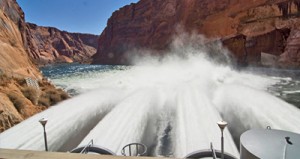
Two types of flows are needed: 1) regular high flows under sediment-enriched conditions to deposit sediment from tributaries and to scour sediment from the bottom of the river to rebuild beaches and near shore habitat for native fish, and 2) seasonally-adjusted steady flows, based on the natural rhythms of the pre-dam river, which would preserve beaches, protect native fish habitat, and stabilize centuries-old cultural sites.
Ten Preliminary Alternatives in the LTEMP EIS
Ten preliminary alternative concepts have been developed by the LTEMP EIS team. These draft concepts are intended to cover a broad range of ideas that focus on various resources and could be analyzed in the LTEMP EIS process. Public comments will also be analyzed and a Draft Environmental Impact Statement released for public review by the end of the year.
It is critical that the LTEMP EIS alternatives consist of new dam operating criteria in concert with other management actions designed to meet the requirements of the Grand Canyon Protection Act. They must also be consistent with other laws, including those regarding water delivery, endangered species, cultural resources, and water quality. The alternative selected as best meeting these criteria should then be tested for the appropriate number of years to achieve the desired results.
Several of the alternative concepts appear capable of greatly benefiting Grand Canyon resources. One strong alternative is the “Naturally Patterned Flow Regime.” It would provide flows that mimic naturally patterned flows based on historic monthly averages, including regular high flows and seasonally-adjusted steady flows. Sediment augmentation and a temperature control device would also be used to achieve more natural sediment supplies and water temperatures.
Another valuable alternative concept being put forth is the “Structured Adaptive Management with Condition Decision-Tree” alternative. This esoteric-sounding alternative would implement a framework that uses a condition-dependent decision tree to maximize benefits to a wide range of resources. Its aim would be to provide a high degree of flexibility in response to annual conditions rather than a static prescription for all years. Everything would be on the table for this one, including high flows, steady flows, sediment augmentation, and temperature control device.
This is a landmark moment for Grand Canyon. The LTEMP EIS provides a public opportunity for Interior and the responsible agencies to accomplish something big — to meet in full the requirements of the Grand Canyon Protection Act. Interior has done a great job so far assembling public comments and developing preliminary alternative concepts. For more information on the re-examination of Glen Canyon Dam, see Interior’s LTEMP EIS website at: http://ltempeis.anl.gov. Please consider joining this important effort. Many are needed to tame a Leviathan!
~ by Nikolai Lash
Read MoreRe-examining Glen Canyon Dam Operations
The Department of Interior is re-examining Glen Canyon Dam operations in what is called the Long-Term Experimental and Management Plan Environmental Impact Statement, LTEMP EIS. Following are comments I wrote for Grand Canyon Trust:
Grand Canyon Protection Act Rules
Several federal laws have been passed to protect Grand Canyon, but prominent among them is the Grand Canyon Protection Act (GCPA), signed into law on October 30, 1992. The GCPA states:
The Secretary shall operate Glen Canyon Dam in accordance with the additional criteria and operating plans specified in section 1804 and exercise other authorities under existing law in such a manner as to protect, mitigate adverse impacts to, and improve the values for which Grand Canyon National Park and Glen Canyon National Recreation Area were established, including, but not limited to natural and cultural resources and visitor use.
The intent of the GCPA is unambiguous: to operate the dam in a manner that protects park resources, notwithstanding impacts to hydropower generation. Senator John McCain, co-sponsor of the bill stated:
The erratic release of water from the dam to meet peak electric power demands has destroyed Colorado River beaches, and harmed other natural, cultural, and recreational resources. Somewhere along the line, we forgot our obligation to the canyon and to the future generations for whom we hold it in trust.
The destructive “erratic releases” Senator McCain refers to are the ceaselessly fluctuating flows from Glen Canyon Dam that generate cheap peaking power but, in the bargain, unravel the health of Grand Canyon. Fluctuating flows erode sediment faster than steady flows, diminishing beaches, harming native fish habitat, eroding centuries-old cultural sites, and jeopardizing the existence of the 4-million-year-old humpback chub, an endangered fish found only in the Colorado River.
New Flows Needed from Glen Canyon Dam
Before Glen Canyon Dam’s existence, Grand Canyon was characterized by huge sweeping beaches built up with raging snowmelt floods in the spring. The wind picked up the beach sediment and carried it inland, burying a multitude of archaeological sites. Water temperature varied from freezing in the winter to a balmy 85 degrees in the summer. Eight native fish, supremely adapted to these harsh conditions, thrived in the mainstem and tributaries. River runners during the twentieth century began taking advantage of these huge beaches for camping.
Glen Canyon Dam blocked the Colorado River in 1963 and initiated a cascade of ecosystem changes. The dam traps about 85 percent of the annual sediment supply for Grand Canyon — the other 15 percent coming from tributaries within the canyon. In addition, water releases from the dam were altered to generate the maximum amount of peaking hydropower. The loss of sediment supply and the greatly increased rate of erosion from flows designed to maximize hydropower set in motion the continual loss of sediment from Grand Canyon. Research on annual sediment balance has shown only one year when Grand Canyon has not lost sediment, and this one positive year resulted from a unique sequence of late season flood events.
The loss of sediment from Grand Canyon has resulted in fewer and smaller beaches. It has also eliminated significant critical habitat for native fish. Sediment deposits create complex shorelines and underwater features that are used by native fish for spawning and rearing. Four of the eight species of native fish that once plied the waters of Grand Canyon have already been lost. A fifth species, the endangered humpback chub, is vulnerable to being lost from Grand Canyon because virtually all spawning and rearing habitat has disappeared from the mainstem.
The continual loss of sediment from Grand Canyon has also resulted in archaeological sites being exposed to erosion and impacts from visitors. Historically, these sites were protected with a regularly renewed layer of sediment derived from the beaches and transported by the wind. Without the influx of new sediment, we constantly lose these irreplaceable features of our cultural heritage.
The way in which water is released from Glen Canyon Dam has profound effects on the river corridor, the species living there, and the abundant cultural sites. Simply stated, water can be released as either steady flows or fluctuating flows. Neither flow regime impacts water supplies or water deliveries by the Colorado River; however, over the last 15 years, science has shown that fluctuating flows damage all the key resources in Grand Canyon–the beaches, the backwater habitats for native fish spawning and rearing, the native shoreline plants and animals, and cultural and archaeological sites. At the same time, scientists have concluded that steady flows are very likely to be optimal for all sediment-related resources. A recent report from Grand Canyon Monitoring and Research Center concluded that fluctuating flows following the last high-flow experiment quickly eviscerated the benefits created by the high flow.
Two types of flows are needed: 1) regular high flows under sediment-enriched conditions to deposit sediment from tributaries and to scour sediment from the bottom of the river to rebuild beaches and near shore habitat for native fish, and 2) seasonally-adjusted steady flows, based on the natural rhythms of the pre-dam river, which would preserve beaches, protect native fish habitat, and stabilize centuries-old cultural sites.
General Issues
Park resources continue to decline under current dam operations and a change is needed now. It is critical that the LTEMP alternatives consist of alternative dam operating criteria (in concert with other management actions) designed to meet the requirements of the Grand Canyon Protection Act.
In addition to the GCPA, alternatives must be consistent with the many laws and policies that govern water releases, park resources and values, and hydropower production. Because of the trade-offs inherent in managing these resources, Congress has established priorities by enacting the GCPA. The GCPA makes it clear that dam operations must be guided first by meeting the legal requirements for water delivery to the lower basin, and then by the need for protecting park resources and values. All other considerations, including hydropower production, are a lower priority.
The Colorado River Ecosystem (CRE) has been drastically altered by the presence and operation of Glen Canyon Dam and other changes, and achieving the resource objectives for the CRE will require bold action. Thankfully, there is a tremendous pool of scientific information from the CRE and other river systems that is available for developing and testing alternative dam operations and other management actions to meet the requirements of the GCPA.
Specific Alternatives and Issues
Steady Flows Conserve Sediment and Warm Water
Most of the resources of concern in Grand Canyon are reliant upon sediment in one way or another. Sediment conservation should thus be a key component of all alternatives considered in the LTEMP EIS. The best flows for conserving sediment are steady flows. A USGS Fact Sheet (Publication #2009-3033) summed up the science position on steady flows in Grand Canyon this way:
For a given volume of water to be released from Glen Canyon Dam, the optimal dam operation for accumulating tributary-supplied sand is a constant, steady flow over the entire year.
Steady flows also warm river water, especially near the shoreline. This is important as native fish need warmer temperatures to successfully reproduce. Two specific types of steady flows should be considered as alternatives in the EIS:
- Seasonally-Adjusted Steady Flows. The steady flow regime that most closely resembles pre-dam flows is called Seasonally-Adjusted Steady Flows (SASF). SASF can take many forms, but its most basic outline contains high steady flows in the spring, perhaps accompanied by a High-Flow Event, followed by low steady flows in the summer and fall. In addition to conserving sediment, this flow regime can also significantly warm shoreline waters. Because of low summer steady flows, water temperatures can rise to a level that supports spawning and rearing of the endangered humpback chub. GCMRC should be asked to develop an SASF alternative, consistent with sediment conservation and improved native fish habitat.
- Year-Round Steady Flows. This is the “best case scenario” for conserving sediment presented in the article, “Is There Enough Sand? Evaluating the Fate of Grand Canyon Sandbars” (Wright and others, 2008). It is based on the conclusion that the “optimal intervening dam operation for rebuilding and maintaining sandbars is year-round steady flows, which would export the least amount of sand compared to other potential dam operations.” (USGS Circular 1366, page 143)
Four-Year Experimental Blocks
Because of the uncertainties attending any new flow regime, one possible alternative would be a 12-year series of three four-year experimental blocks that test the pros and cons of both kinds of steady flows described above. The 12-year experiment might begin with four years of Seasonally-Adjusted Steady Flows, followed by four years of Modified Low Fluctuating Flows for comparison’s sake, and finish with four years of Year-Round Steady Flows. At the end of the 12 years, all three flow regimes would be analyzed to see which produces the best results for the resources in Grand Canyon, consistent with the Grand Canyon Protection Act.
High-Flow Events
High-Flow Events (HFEs) should be a part of all alternatives. High flows done on a regular basis when sufficient sediment is in the river system can help build beaches and improve other sediment-related resources.
The current limit of HFEs to 45,000 cfs should be changed. Sediment science suggests that flows of 60,000 cfs and more would be extremely beneficial for the sediment-based resources in Grand Canyon. Before Glen Canyon Dam was completed, the annual spring snowmelt floods ranged between 35,000 and 120,000 cfs. Beaches, native fish habitat, cultural sites, and other resources would benefit by regular HFEs that mirror these pre-dam floods.
2007 Shortage Criteria
Modified Low Fluctuating Flows plus equalization flows equals massive destruction of Grand Canyon. Because of the guidelines adopted in the “Colorado River Interim Guidelines for Lower Basin Shortages and the Coordinated Operations of Lake Powell and Lake Mead” (Interim Guidelines), huge equalization flows were released in 2011, transporting a record amount of sediment from Grand Canyon, dramatically eroding beaches and damaging Grand Canyon resources.
The Interim Guidelines as adopted has set back sediment conservation in Grand Canyon several years. Higher flow volumes have a direct effect on sand transport, a fact corroborated in the modeling simulations of sand transport for hypothetical annual release volumes as published in USGS Open File Report 2010-1133, “Evaluation of Water Year 2011 Glen Canyon Dam Flow Release Scenarios on Downstream Sand Storage along the Colorado River in Arizona” (Wright and Grams, 2010).
To remedy this situation, the Interim Guidelines should be amended to include consideration of the requirements of the GCPA. It should also explicitly be acknowledged that when equalization is required, larger flows can and should be released over a two- or three-year period. This longer term of releases would still satisfy the criteria for moving water from Powell to Mead, but would do it in a manner that better protects the resources in Grand Canyon.
Extirpated Species
A plan to reintroduce extirpated species in Grand Canyon should be a part of all alternatives considered in the LTEMP EIS. These might include: the river otter (Lutra canadensis), razorback sucker (Xyrauchen texanus), Colorado pikeminnow (Ptychocheilus lucius), and bonytail (Gila elegans)).
Reintroducing extirpated species is one of the 12 goals highlighted in the Stategic Plan of the Glen Canyon Dam Adaptive Management Program. It is also a park value supported by the Grand Canyon Protection Act.
Sediment Augmentation
The EIS should examine options for mechanically introducing additional sediment below the dam, to augment that which is periodically available from tributaries.
Temperature Control Device
The natural flow cycle of the Colorado River before Glen Canyon Dam was constructed included a seasonal warming trend in the late summer as the water temperature increased to approximately 85 degrees. After the dam was constructed, the temperature of released water became relatively steady at between 45-50 degrees as water was drawn from the deep penstock intakes. Even though the released water warms as it moves downstream, it still does not normally the temperature that allows endangered, warm water fish, such as the humpback chub to reproduce in the mainstem of the Colorado River.
The EIS should actively evaluate the efficacy of implementing a Temperature Control Device that would provide temperature control flexibility and improved water quality. A selective withdrawal structure or other methodology could improve the ability to create productive habitat for endangered fish and also offer more flexibility to respond to changing ecosystem concerns in future years.
As stated in the 1995 Glen Canyon Dam FEIS:
Increasing mainstem water temperatures by means of selective withdrawal structures installed at Glen Canyon Dam offers the greatest potential for creating new spawning populations of humpback chub and other native fish in Grand Canyon.
Summary
It is critical that the LTEMP alternatives consist of alternative dam operating criteria in concert with other management actions designed to meet the requirements of the Grand Canyon Protection Act while being consistent with other laws including those regarding water delivery, endangered species, cultural resources, and water quality. The alternative selected as best meeting these criteria should then be tested for the appropriate number of years to achieve the desired level of confidence in the results.
The LTEMP provides a public opportunity for Interior and the responsible agencies to accomplish something big — to meet in full the requirements of the Grand Canyon Protection Act. To do this, the LTEMP must be intellectually honest, legally defensible, scientifically credible, and reflect the high value the public places on the integrity of the natural, cultural, and recreational resources in this most iconic of national parks.
~Nikolai Lash
Read More

